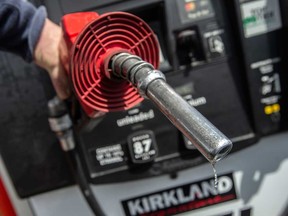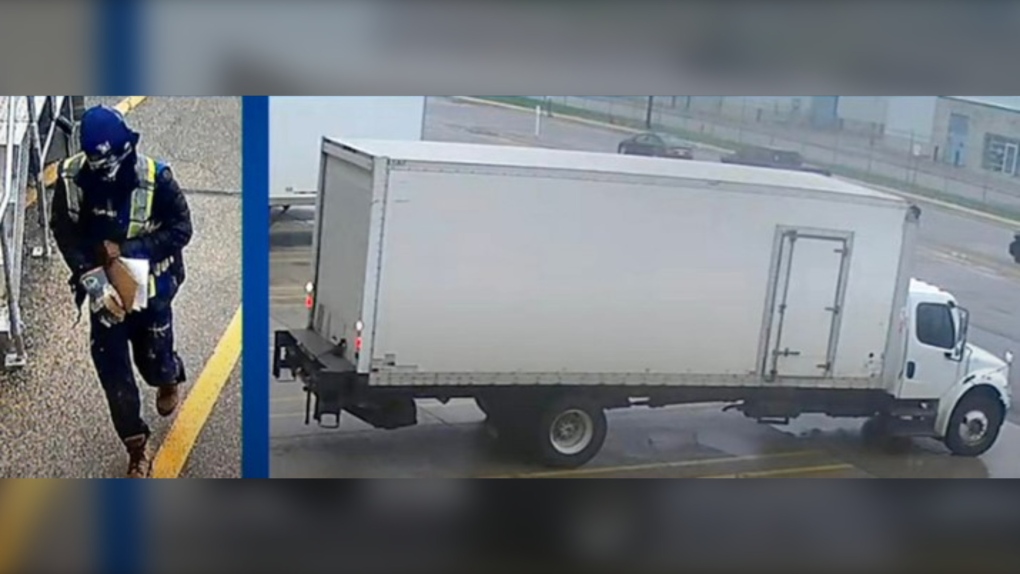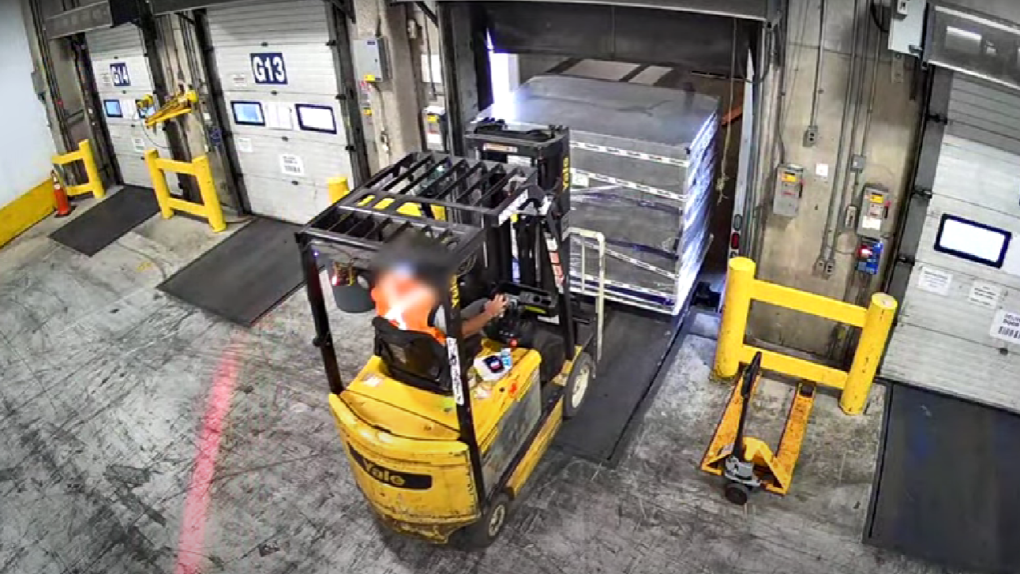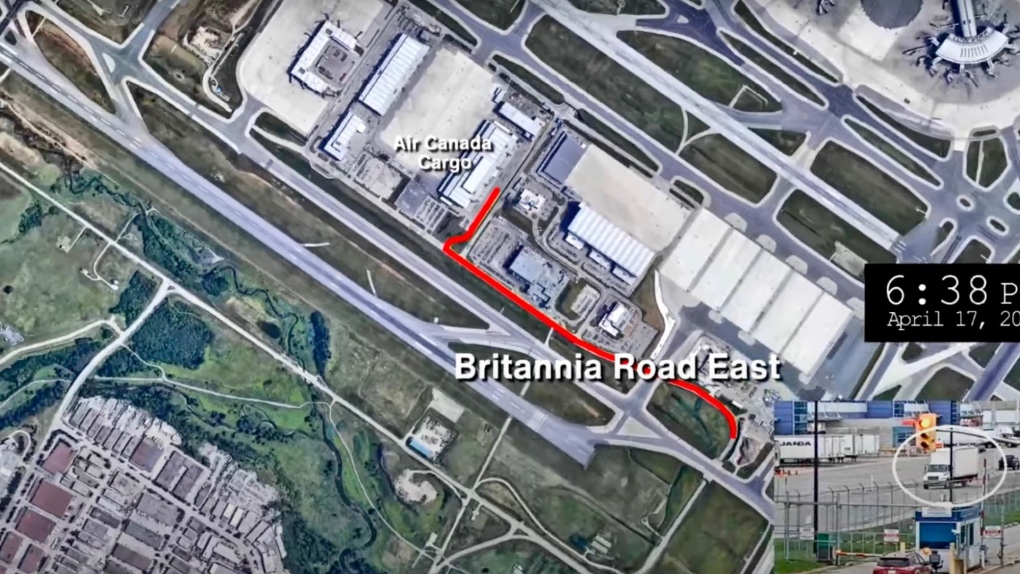Article content
There’s a price shocker coming at the pumps.
A southern Alberta First Nation is battling the federal government for the right to control its own oil and gas royalties.
The Bearspaw First Nation is demanding that Ottawa no longer collect any money on its behalf and return about $50 million collected from oilpatch activity on its traditional territory.
The band alleges the government is doing a poor job of investing the savings and won’t release the funds because of Ottawa’s mistrust of First Nations to properly handle money.
The federal government has had control of band money since the late 19th century and acted as trustee of any energy royalties earned by First Nations. To this day, the government also holds on to money earned from other sources, such as the sale of land, timber and gravel.
A few other First Nations in Western Canada have succeeded in withdrawing all of their funds from the federal government, but the process has always been challenging and in one case took 16 years of legal wrangling.
The Bearspaw not only wants to access all of its funds but ensure that future revenues go straight to the First Nation. The band council wants to set up its own trust fund, which it expects will earn much more interest.
“We’re not asking for handouts. All we’re asking is to manage money that belongs to us,” Chief Darcy Dixon said in an interview.
“Today, they’re still saying, ‘Hey look, folks. You can’t look after your money. You can’t do better than we can.'”
If the First Nation wanted to withdraw a few million dollars for a housing project, it would be easy to do, Dixon said, but to take control of the entire fund is proving to be “impossible.”
Bearspaw leaders say they were told by Indigenous Services Canada (ISC) on June 3, 2020, that the government would transfer all of the money to the First Nation, but the transaction still hasn’t taken place.
Dixon wrote a letter this month directly to Minister of Indigenous Services Marc Miller, urging the government to “immediately take the steps required to truly respect your commitments to us in and to proceed without further delay.”
In an emailed response to CBC News, an ISC official said the department could not comment on dealings with the Bearspaw First Nation because of confidentiality.
Bearspaw Chief Darcy Dixon says the community’s savings help subside programs and provide care for elders. 1:31
“We are committed to working collaboratively with First Nations interested in managing their trust moneys. This includes working with the Bearspaw First Nation to support their goals for their respective trust funds,” ISC spokesperson Danielle Geary said in the email.
There was no response to an interview request with Miller.
The Samson Cree Nation, located about 100 kilometres south of Edmonton, launched a legal battle against Ottawa to gain access to its money in 1989 and was eventually victorious in 2005. The following year, the federal government transferred $349 million into the First Nation’s newly created Kisoniyaminaw Heritage Trust Fund.
At the beginning of 2017, the fund had a balance of $456 million, while $202 million had been withdrawn by the Samson Cree.
Withdrawing all of its oil and gas royalties and self-managing the money had never been done before by a First Nation in Canada.
“The federal government fought tooth and nail. They spent millions and millions of dollars to prove that they were right and to really force the colonialism that we couldn’t take care of our own money,” said Stephen Buffalo, the son of former Samson chief Victor Buffalo.


Among other accolades, Victor Buffalo was invested into the Order of Canada for his instrumental role in the Samson gaining control of its natural resource revenues.
Since then, the Ermineskin Cree Nation, located next to Samson, and the Onion Lake Cree Nation, which straddles the Alberta-Saskatchewan border, have both set up their own trust funds after many years of delays working with the federal government.
The Ermineskin trust was established in 2011 with $123 million, and it has now earned $214 million more compared with the amount that would have been paid by the federal government if the First Nation had left the money under Ottawa’s control, according to the fund’s 2020 annual report.
Since inception, the fund’s annualized rate of return is 10 per cent, compared with 2.17 per cent if the money had been left under government oversight.
Onion Lake’s fund began in 2016 with more than $44 million after what it calls a “long and difficult struggle” to gain control of its own money. Since then, the trust has paid out $59 million to the First Nation and has a balance of just over $37 million. The annualized rate of return is nearly 11 per cent.
All three First Nations initiated legal action in their efforts to take control of their money from Ottawa.
“It’s really sad that the federal government thinks that we couldn’t manage this ourselves,” said Stephen Buffalo, who is optimistic that the Bearspaw First Nation will be successful in being able to manage its savings.
“If the precedent is set for this circumstance to take control of your own oil and gas revenue money, I think they just have to move forward,” said Buffalo, who is president of the Calgary-based Indian Resource Council, which represents First Nations that have oil and gas production — or potential production — on their land.


The Bearspaw is one of three bands that make up the Stoney Nakoda Nation. Last year, each band passed a resolution allowing the Bearspaw to withdraw its per-capita share of the money the federal government was holding for the Stoney Nakoda Nation.
“Canada should be transparent about why they’re delaying or why they can’t hand over control over capital,” said Brad Bryan, an assistant professor in the law faculty at the University of Victoria who teaches and researches First Nation fiscal relations.
The current financial arrangement with Ottawa is similar to having to ask your parents in advance for every dollar that you spend, he said.
Any financial abuses by First Nation members are limited and rare, Bryan said.
“In my experience, when I have been working as a lawyer in communities, I found the level of financial literacy among members — and not just council members — to be extremely high,” he said.
In 2017, the National Indigenous Economic Development Board — which provides strategic policy advice to Ottawa on Indigenous economic development — produced a report about the issue at the request of the standing Senate committee on aboriginal peoples.
Among its recommendations, the board said the federal government should “make every effort to work with First Nations and First Nation institutions to overcome internal policy and legislative barriers that impede First Nation control over Indian moneys.”
The report said Ottawa should use the guiding principle: “Indian moneys should be in the hands of First Nations, not the Government of Canada.”
Gas prices have not been this high since August 2022

There’s a price shocker coming at the pumps.
Advertisement 2
Article content
Gas in Ontario, including the GTA, will go up 14 cents a litre overnight for customers filling up on Thursday, says Dan McTeague, the president of Canadians for Affordable Energy.
Article content
“So going from $1.65.9 (per litre) going to $1.79.9,” said McTeague adding the increase will affect the entire province except for northwestern Ontario, which gets its prices from the prairies market.
“That’s the highest level since August, 2022, almost two years ago,” he added.
Recommended from Editorial
McTeague said the reason for the price hike is that stations are switching over to summer-blend gasoline.
“Around this time of year prices go up to reflect the new blend of gasoline, which is more expensive to make,” he explained. “Butane is used in the winter, for gasoline, whereas in the summer it’s alkyaltes. Alkyaltes are extremely expensive.”
Advertisement 3
Article content
“In the winter you want your ignition to start quickly in cold temperatures, you uses volatile butane. You take that out in the summer. That’s a big difference. This is going to be around for awhile and it could get higher,” McTeague said.
McTeague also blamed the rise in gas prices in Canada on the carbon tax increase, the rising price of oil, and the weak Canadian dollar.
“It just makes a bad situation worse,” he said. “It’s just another brick in the wall, another load on the camel’s bank. The cost of denying our resources, blocking pipelines, is one of the most significant reasons why the Canadian dollar is so weak.”
Article content

CALGARY — A wildfire in west-central Alberta that was sparked by a natural gas pipeline rupture is under control, but an investigation into what caused the pipeline to break could take months or even years.
As of Wednesday morning, there was very little fire activity left in Yellowhead County, where a 10-hectare fire burned on Tuesday about 40 kilometres northwest of Edson.
“But for it to be considered extinguished, we’re going to have to hot spot,” said Caroline Charbonneau, area information co-ordinator with Alberta Forestry and Parks.
“That means we’ll have to dig into the ground, look and feel for hot spots, and then douse it with water. And that could take several days.”
ADVERTISEMENT
The fire on Tuesday, which occurred as much of Alberta is dealing with extremely dry early spring conditions, was sparked when a natural gas pipeline owned by TC Energy Corp. ruptured.
There were no injuries, and the fire was never a threat to any surrounding communities. The affected pipeline segment was isolated and shut in and there is no more gas leaking from the pipeline.
The Canada Energy Regulator had inspectors on site Wednesday to monitor the company’s response and the Transportation Safety Board is investigating the incident.
According to CER, there have been 12 natural gas pipeline ruptures in Canada since 2008, and Tuesday’s incident near Edson was the first rupture on that particular pipeline within that time period.
The 36-inch diameter pipe that ruptured is part of TC Energy’s NGTL pipeline system, which transports natural gas from Alberta and northeast B.C. to domestic and export markets. The system spans 24,631 kilometres and connects with TC Energy’s Canadian Mainline system, Foothills system and other third-party pipelines.
The NGTL pipeline system is like a web made up of different lines that have been developed in stages.
In 2022, there was a rupture on a separate part of the system that resulted in an explosion and fire near Fox Creek, Alta. There were no injuries.
A TSB investigation into that incident took more than 14 months, and concluded that the pipeline ruptured due to reduced pipe wall strength caused by external corrosion.
While the primary risk of a crude oil pipeline leak is an oil spill that harms the local ecosystem, natural gas pipeline ruptures can and do result in fires or explosions, said Bill Caram, executive director of the Pipeline Safety Trust, a U.S.-based non-profit organization.
“The chances are extremely high that a molecule of natural gas that enters a pipeline will go through that pipeline without a failure. Pipelines are quite safe, and when you look at incident rates compared to other modes of transportation like rail or truck, they are much less likely to have a failure,” Caram said.
“But what you don’t get a sense of by looking at the risks of pipelines in that way is how catastrophic a failure can be when it does happen.”
According to the TSB, there were 19 recorded incidences of fires related to pipelines in Canada between 2012 and 2022.
The TSB’s most recent report on pipeline transportation safety in Canada states that in 2022 there were 100 companies transporting either oil or gas or both in the federally regulated pipeline system, which includes approximately 19,950 km of oil pipelines and approximately 48,700 km of natural gas pipelines.
That year, there were 67 pipeline transportation accidents and incidents on federally regulated pipeline systems, according to the report.
That number was well below the 10-year average of 112 occurrences, and was also the lowest number of occurrences since 2019, when 52 pipeline accidents or incidents were recorded by the TSB.
The TSB defines a pipeline “accident” as an incident that results in a person being injured or killed, a fire or explosion, or significant damage to the pipeline affecting its operation.
Less severe pipeline events that involve the uncontrolled release of a commodity or a precautionary or emergency shutdown are classified by the TSB as “incidents.”
There have been no fatal accidents directly resulting from the operation of a federally regulated pipeline system since the inception of the TSB in 1990.
This report by The Canadian Press was first published April 17, 2024.
Companies in this story: (TSX:TRP)
Amanda Stephenson, The Canadian Press
Police say one former and one current employee of Air Canada are among the nine suspects that are facing charges in connection with the gold heist at Pearson International Airport last year.
At a news conference Wednesday on the one-year anniversary of the heist, police confirmed that five suspects were arrested and four others are facing charges in connection with the largest gold theft in Canadian history.
Police said the suspects face a total of 19 charges and Canada-wide warrants have been issued for the arrest of three of the suspects who have not yet been apprehended. All of the suspects arrested in connection with the heist have been released on bail, police confirmed in a news release issued Wednesday.
Peel Regional Police Chief Nishan Duraiappah said the heist was “carefully planned” by a “well-organized group of criminals.”
“This story is a sensational one and one which probably, we jokingly say, belongs in a Netflix series,” he said.
Police said 6,600 gold bars were stolen from Air Canada’s cargo facility on the evening of April 17, 2023 by a suspect who arrived at the warehouse in a five-tonne delivery truck.
The gold, along with about $2.5 million in foreign currency, had been shipped to Toronto from Zurich in the hull of an Air Canada plane and was offloaded to an Air Canada cargo facility shortly after the flight landed at Pearson Airport that afternoon.
Police allege that the suspect came into possession of the stolen gold and bank notes after presenting Air Canada personnel with a fraudulent airway bill.
“The airway bill was for a legitimate shipment of seafood that was picked up the day before,” Det.-Sgt. Mike Mavity, the major case manager for the joint investigation, dubbed Project 24K, told reporters on Wednesday.
“This duplicate airway bill was printed off from a printer within Air Canada cargo.”


Brinks Canada, which was hired to provide security and logistics services for the transportation of the shipment, showed up at the facility a few hours later to pick up the items, police said.
According to investigators, when Air Canada employees tried to locate the container, they realized it was missing and quickly launched an internal investigation. Police were notified about the stolen goods shortly before 3 a.m. the following day, Mavity said.
An exhaustive investigation followed, police said, with officers reviewing video surveillance footage from 225 businesses and residences in an effort to track the path of the truck, which has since been recovered.
Mavity said that last summer, they identified 25-year-old Durante King-McLean as the driver of the truck but were unable to locate him.
In September 2023, Mavity said King-McLean was stopped in rental vehicle by Pennsylvania State Police near Chambersburg, Pennsylvania.
“After a brief foot chase, he was detained and troopers located 65 illegal firearms in the vehicle,” Mavity said Wednesday.
According to Mavity, investigators believe that the stolen gold was melted down and sold and the proceeds were used to purchase illegal guns for a firearms trafficking operation.
He said members of Project 24K have been liaising with the U.S. Alcohol, Tobacco, and Firearms Bureau (ATF) with respect to this aspect of the investigation.
Speaking at the news conference on Wednesday, a representative from the ATF said the law enforcement agency believes the 65 guns seized during the arrest of King-McLean were bound for Canada.
While King-McLean is currently in custody in the United States, he is now wanted on multiple charges in connection with the gold theft.
“We are alleging that some individuals who participated in this gold theft are also involved in aspects of this firearms trafficking,” Mavity added.


Two “debt lists” were found by investigators at separate locations during the investigation, police said.
“A common term in drug trafficking investigations, we believe these lists actually show where the money was distributed when the gold was sold by the suspects,” Mavity said.
He said the names on both lists are “consistent” and police are trying to identify all of those identified.


Police said one current Air Canada employee, identified as 54-year-old Brampton resident Parmpal Sidhu, has been charged with theft over $5,000 and conspiracy to commit an indictable offence. A Canada-wide warrant has been issued 31-year-old Simran Preet Panesar, who police said resigned from his position as a manager at Air Canada back in the summer.
“He has been known to us since early on in the investigation. He actually led a tour for Peel Regional Police before we knew his involvement,” Mavity said Wednesday.
He added that police have an idea where Panesar may be but did not elaborate on a possible location.
Mavity said he believes the suspects needed employees on the inside to carry out the heist.
“Because of their position within Air Canada, in my opinion, yeah they needed people inside Air Canada to facilitate this theft,” he said.

Loblaws Canada groceries: Shoppers slam store for green onions with roots chopped off — 'I wouldn't buy those' – Yahoo News Canada
Rupture on TC Energy's NGTL gas pipeline sparks wildfire in Alberta – The Globe and Mail
Saudi Arabia Highlights Investment Initiatives in Tourism at International Hospitality Investment Forum




Cytiva Showcases Single-Use Mixing System at INTERPHEX 2024 – BioPharm International
Squatters at Gordon Ramsay's Pub Have 'Left the Building' After Turning It Into an Art Café – PEOPLE




The Earthquake Shaking BC Politics




Bill Morneau slams Freeland’s budget as a threat to investment, economic growth




Nasa confirms metal chunk that crashed into Florida home was space junk
Comments